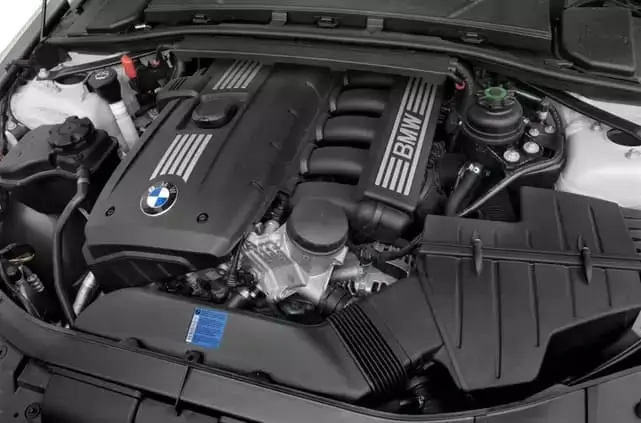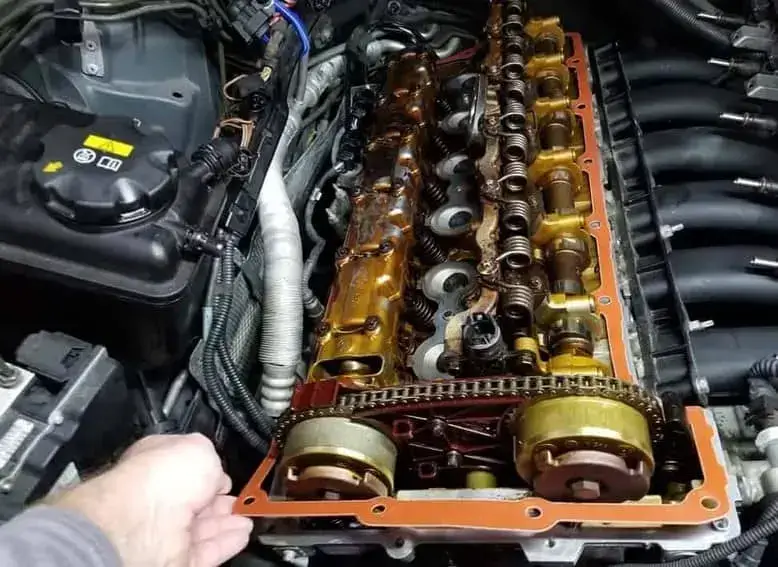The N52 is a naturally aspirated 6-cylinder engine that has surpassed the M54 engine and has become one of the most successful and dependable BMW engines to date.
Produced between 2004-2015, BMW introduced a very similar sibling, the N51 engine. While there are some distinctions, the N51 and N52 engines produce the same power output.
Let’s delve deeper into the BMW N51 engine in this blog.
BMW N51 Engine Overview
The N51 engine is a slightly modified version of the N52, designed to meet SULEV standards. It is mainly sold in regions in the U.S. with SULEV regulations enforced.
Let’s discuss some key points about the N52, which served as the foundation for the N51 engine. The N52 is a naturally aspirated 6-cylinder engine that was utilized in various BMW models from 2004-2015. It was the first engine to feature a water-cooled engine with a magnesium/aluminum composite engine block construction.
The N52 was recognized in the Ward’s 10 Best Engines in both 2006 and 2007, solidifying its reputation in BMW’s engine lineup.
Following the N52, the N51 was equipped with an upgraded three-stage variable-length intake manifold (DISA) and other enhancements, which will be explored in the differences section.
Many individuals now realize the true value of the N51 engine and regret selling their engines.
BMW N51 VS N52
Essentially, both the N51 and N52 engines are very similar, almost identical siblings. However, there are key distinctions between the N51 and N52 engines.
For example, the N51 features a three-stage variable-length intake manifold compared to the N52’s one-stage manifold. Additionally, it has a lower compression ratio of 10.0:1, whereas the N52 has a ratio of 10.7:1.
The N51 also incorporates an advanced “Prem-air” coating radiator with an integrated EAC (Environmental Air Catalyst) sensor to monitor radiator function. Both engines also have different cylinder head and combustion chamber designs.
These are some fundamental differences between the N51 and N52. Visually distinguishing between the two engines is not possible; one must look for the emissions label on the hood, displaying ULEV (N52) or SULEV (N51).
For a detailed comparison between the N51 and N52, visit: BMW N51 vs N52: Differences You Should Know
Most Common BMW N51 Engine Problems
Similar to the N52 engine, the N51 also experiences common issues despite its reliability.
VANOS Failure
Like the N52 engine, the N51 utilizes the variable valve timing system, or double VANOS, for intake and exhaust valves. Consequently, the N51 is susceptible to VANOS failure.
The VANOS system relies on solenoids to control oil flow to the actuators, adjusting the cam gears by opening and closing the valves.
Continuous activation of the VANOS system leads to wear and tear on the solenoids. When the VANOS system malfunctions, symptoms such as reduced engine power, rough idle, and poor fuel economy become noticeable.
To prevent this issue, it is advisable to replace the solenoids every 70,000-75,000 miles, which is a relatively inexpensive and straightforward task.
EAC Sensor
The EAC (Environmental Air Catalyst) sensor is linked to the radiator and monitors its functionality. A malfunctioning EAC sensor can result in emission or smog test failures and trigger a check engine light on the dashboard.
If the EAC sensor fails, the entire radiator must be replaced, as the sensor is integrated into the unit. Fortunately, the N51 SULEV comes with a 15-year or 150K miles coverage for all emission-related issues.
Hydraulic Valve Adjusters (Lifters) Ticking Issues

The ticking issue in the N51 is akin to that found in the N52 engine, where the hydraulic valve lifters begin to wear out at higher mileage, resulting in an audible ticking noise while driving.
This ticking noise is most prominent when the engine is cold, diminishing as the engine warms up. The problem stems from poor oil circulation in the lifters, caused by inadequate oil flow due to the cylinder head and lifter design.
Water Pump Failure
BMW introduced a plastic water pump in the N51 & N52 engines, a new technology that faced numerous issues, often developing cracks around 40,000-45,000 miles.
Despite the benefits of the new pump technology, its poor construction led to premature failures. Symptoms of water pump failure include engine overheating, increased radiator fan activity, and potential smoke emissions from the radiator.
Thermostat Failure
Thermostat failure is another potential problem in the N51 engine, similar to the N52. A faulty thermostat can impact the engine’s temperature regulation, leading to overheating and other issues.
There are two ways a thermostat can fail: open or closed. A “closed” failure restricts the flow of hot coolant to the radiator, resulting in rapid engine overheating and potential internal component damage.
Common symptoms of a failed thermostat include engine overheating, coolant leaks, and prolonged warm-up times during cold starts.
Oil Filter Housing Gasket Leak
The oil filter housing gasket seals the oil filter housing within the engine. Over time, the gasket may develop cracks, leading to oil leaks. This is a common issue among N51/N52 engines.
Oil leakage can be detrimental, potentially causing severe engine damage if left unaddressed. Prompt repair of any oil leaks from the oil filter housing area is essential.
Valve Cover Gasket Leak

Valve cover gasket leaks are a common issue across various BMW engines.
Due to prolonged exposure to heat, the cover gasket may deteriorate, leading to oil leakage into the engine bay. Warning signs of this issue include a burning oil smell, smoke from the valve cover, low engine oil levels, and other indications.
If you encounter this problem, it is crucial to replace the gasket promptly to prevent further complications.
These are some of the common issues that may arise with the N51 engine. While prevalent in most engines, the N51 does not exhibit any severe problems.
What Is A SULEV Engine?
SULEV, or Super Ultra Low Emission Vehicle, is an emission standard set by the California Air Resources Board (CARB) for passenger vehicle emissions in the U.S.
CALegislation recommended manufacturers produce a percentage of SULEV vehicles, leading BMW to introduce the N51 engine. The N51 was designed with a compression ratio of 10.0:1, lower than the N52 engine’s 10.7:1 ratio.
Compared to average vehicle models, SULEV engines emit 90% fewer hydrocarbons, carbon monoxide, nitrous oxides, etc. Testing under an FTP-75 cycle reveals that the N51 emits approximately 1.0g/mi of CO (carbon monoxide) and 0.02g/mi of NOx (nitrous oxides), while the N52 engine emits 2.1g/mi of CO and 0.07g/mi of NOx.
This represents a significant improvement in emission levels and environmental impact.
Is The BMW N51 More Expensive To Own?
In short, yes, the N51 is generally more costly to own than the N52 engine. This higher cost can be attributed to the utilization of upgraded and expensive components to reduce emissions. The complexity and cost of using such parts contribute to the overall higher expense.
Additionally, post-purchase costs can add up due to the need to replace entire units for certain components, such as the radiator if the EAC sensor malfunctions.
However, one advantage of the N51 or SULEV engines is the 15-year or 150,000-mile warranty. This warranty covers any emission-related part defects, providing peace of mind for owners.
Some owners have saved significant sums through the extended warranty, although awareness of the warranty terms may vary among BMW dealerships.
Conclusion
Now that you have a comprehensive understanding of the N51 engine, you may want to explore its counterpart in more detail here: BMW N52 Engine: All You Need To Know.
Both the N51 and N52 engines offer solid reliability and performance. When considering the N51 engine, it’s essential to recognize the potential higher maintenance costs associated with it.
Ultimately, a well-maintained, lower mileage N51 engine with remaining warranty coverage can be a wise investment. However, post-warranty costs can be substantial.
Alternatively, the N52 engine, with similar power output and renowned reliability, can also be a viable choice.
FAQ
The N51 engine is the SULEV version of the N52 engine, featuring upgraded components and the same power output. The N51 offers a reliable performance with an output of approximately 240 horsepower.
Yes, N51 engines are considered reliable, offering low emission levels and dependable performance. The N51 is a SULEV engine known for emitting 90% fewer pollutants.
The N51 SULEV engine delivers around 240 horsepower.
Note: The featured image shows an N52 engine.
Image Credit: Cars.com
Similar Posts:
BMW N52 Engine: All You Need To Know
BMW N52 Reliability: The Great Natural Aspirated Engine
What is BMW N52 Oil capacity?
BMW N52 Oil & Filter Change DIY Guide (Step By Step Process)
8 Most Common BMW N52 Engine Problems
What BMW Models Has the N52 Engine?

















